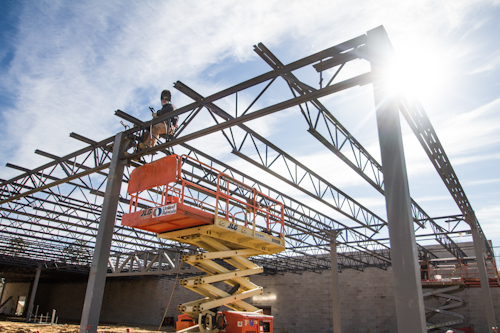The Pryor-England Center for Science and Engineering expansion is set for completion in mid-July of this year and will include 13,400 square feet of academic space including two classrooms, five lab spaces and five faculty office spaces. A proposal document for the project stated that the approximately $4 million expansion will meet the demand for more biology and chemistry classes, which was the main driving force to begin construction.
Not only are the existing science lab and classroom spaces used by biology, chemistry and engineering students, but also by many students from all over campus. Exercise science, psychology and dietetics majors all make use of the space.
According to the proposal document, in the past seven years, the number of students taking physical and biological science classes has increased four times faster than any other area on campus. Since 2003, lab enrollment for science majors has increased 71 percent. In the same time span, the number of credit hours taught by the department has increased by 32 percent.
Construction began in November of last year and will continue into the summer. However, no official completion date has been set.
With the recent wave of freezing temperatures, work was put on hold due to concern for the workers’ health. With temperatures back on the rise, Danny DeRamus, director of physical resources, said he is confident with the status of the project.
“We are making pretty good progress,” DeRamus said. “Our priority right now is to get the walls and roof up.”
The expansion was not originally part of the administration’s current five-year plan but is the direct result of the increased enrollment in the graduate programs of the College of Allied Health and undergraduate enrollment in all science majors.
“This (expansion) just had to happen,” President Bruce McLarty said. “It is a direct result of the pharmacy, PA and physical therapy programs. We are catching up to where we need to be.”
According to the expansion’s proposal document, “this project is the most important new space that will be added to campus in the administration’s current strategic plan,” which went into effect last fall and will last until 2019.
“The current five-year plan we are in has very little building projects in it,” McLarty said. “But there are some things we will look very seriously at that could involve buildings.”
McLarty continued by saying the Brackett Library, Ganus Building and the Ganus Athletic Center wellness complex are all being considered for possible updates and expansion projects within the next five years. However, none of them have priority to begin in the first year of the current plan.
The administration runs on strategic plans that are each five years long. According to McLarty, constituents from all over campus come together to voice their opinions on what should be focused on. Ideas are taken from faculty, staff, students and alumni and then condensed into a proposal. After the plan is approved by university executives, it must then be ratified by the Board of Trustees.
“Some ideas are dreams for 10 years before they make it to the table,” McLarty said, “Then funding becomes an issue.”
While there is no long-range plan for Harding’s future, McLarty is certain the university will make adjustments as needed.
“Twenty-two years ago we didn’t have email,” McLarty said. “Now there are whole classes based around it. So it’s pretty dynamic.”
